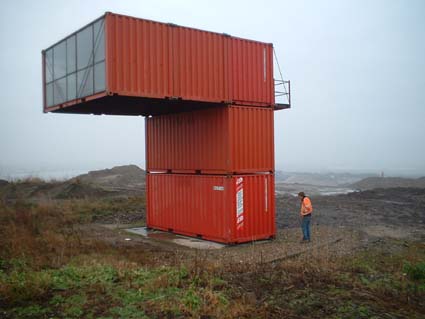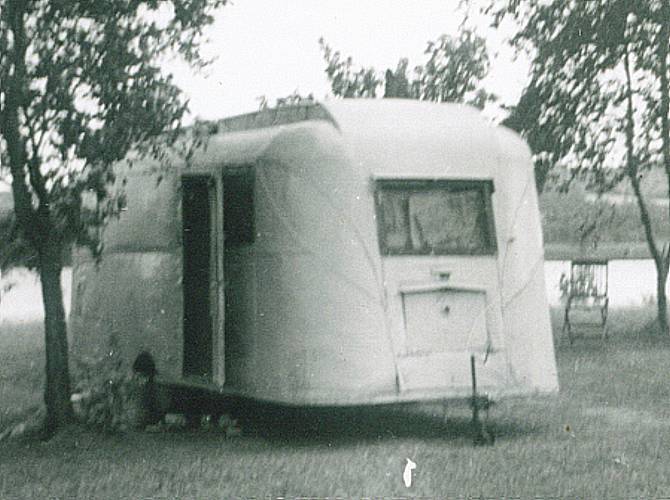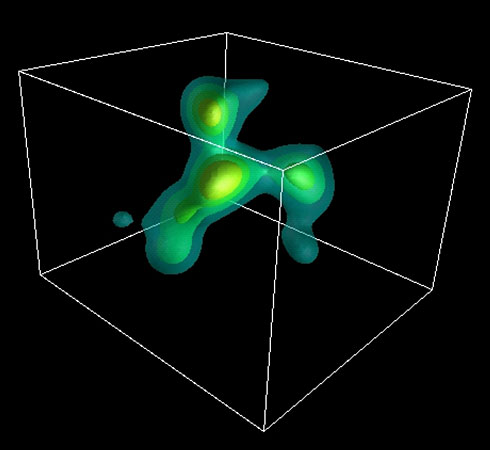Schwarz
View current page
...more recent posts
caretaking glass house
tempohousing (pdf warning)
this isnt going away because we wont let it. do-it-yourselfers push back against the pros.
It's great that we have some professional designers, architects and builders on this list to give us advice on our dreams of building our homes for something less than custom-built, market-rate prices. What we should remember, however, is that the professonals may be looking to make a buck off of us as they offer their input. It may not be in their best interest to tell us that we can do a lot of this ourselves.
I noticed that one of you suggested that it makes some sense to have our containers modified by a professional located 3000 miles away because they are the experts at container modification. I have no doubt that the folks in Florida are real pros at the job, but the thought of shipping 8 or 9 containers from Florida to Southern Washington where I want to build seems a little like the old saying of "hauling coal to Newcastle." Both Seattle and Portland have thousands and thousands of clean, used containers just waiting to be converted...I'd be astounded if I couldn't find someone in the area who is capable of cutting a hole in sheet metal and welding in a simple frame and then painting the whole thing with a few coats of Supertherm. I've looked pretty closely at the containers that were modified for the Redondo House and I don't see anything that couldn't have been done in LA or Long Beach.
I have nothing against any of the professonals on this list, but suggesting that we should expect to pay the same price for a container home as we would for a custom-built is self-serving at best.
We certainly need professionals who are willing to offer their advice, but please folks, help us make this list work without turning it into a free medium to market your services.
Rather than more talk of issues like the local cost of labor, What we really need is for some enterprising entreprenuer to come up with a bunch of kit parts to make these things managable for an enterprising contractor or DIYer.
Make us a series of infill parts: an 8'x8' sliding glass door section that fits precisely into the end-opening of a container; a series of double-hung or casement windows that will fit into a weldable frame that is matched to the corrugations of the container wall; a window wall in a variety of widths; a selection of door inserts that come with their own metal frames; some sort of a joining material and gasket to fill the seams between containers; an adhesive that will work to hold wood to sheetmetal; a baseboard heating/electrical outlet that would fit a container; a mounting system for kitchen cabinets; a joining mechanism for attaching containers together and to a foundation; SIP roof and SIP infill pieces; skylights; an electrical wire harness; custom engineered posts and beams to reinforce our containers when we are cutting out walls; and most of all, a set of instructions on how to put it all together and meet the demands of the local inspections department. I could go on, but you get the point.
There are lots of different needs on this list. We have members who are building simple two-container homes, off the grid in the desert, and others who are planning 3000 sq. ft. beach homes. Each of us has our own needs that could be serviced by those who have special training and experience in the field. What we must remember, however, is that no one in this country really has much experience in container housing, and just because someone is an architect doesn't mean that they are expert in this endevor.
back yard coasters
via zars
missile base
silohome
via zoller

orbino by luc deleu from 2002
the three containers forming the top floor complete a 20' x 24' room with the interior walls removed. its being used as an art gallery.
kick ass batch of shipping container pieces in this thread. some familiar, but the freitag shop project was quite a surprise.
more on freitag shop
total eclipse of the heart

landscrape
Bollards — those ubiquitous waist-high steel posts — and concrete highway barriers meant to keep out bomb-carrying vehicles are giving way to barricades designed to blend with the appearance of streets and buildings.
Far from reassuring those they are meant to protect, fortifications of any design create "a climate of fear," says architect Michael Sorkin, director of the graduate design program at City College of New York. "It's creating a kind of culture of paranoia."
33 photo les panograph by chalky lives on flicker
I don’t really feel like talking about this,” Mr. Schnabel said one recent morning at the hotel, again evoking the often evasive Mr. Starck. He was pacing the crowded lobby in sneakers, baggy shorts and a Western checked shirt, waiting for the delivery of the hotel’s estimable collection of plus-size art (much of it his own), adjusting the placement of the chairs and side tables (also heavy on the Schnabels) and generally helping to put the finishing touches on the $200 million project that has transformed the old Gramercy Park from a bastion of musty authenticity with wall-to-wall carpeting and Swedish meatballs in the bar.
Mr. Schrager was there, too, with his in-house architect, Anda Andrei; his business partner, Michael Overington, vice chairman of the Ian Schrager Company; and other essential and long-serving staff members. But though Mr. Schnabel’s friend Lou Reed would drop in briefly to view and praise the artist’s latest work in progress, Mr. Schnabel had brought with him only a small and quirky entourage: an assistant imported from Paris to perfect the French dialogue in his forthcoming film adaptation of Jean-Dominique Bauby’s book “The Diving Bell and the Butterfly,” and his twin 12-year-old sons, Olmo and Cy.
Ever the rebel, Mr. Schnabel rejects the obvious term for someone who does what he has just done at the Gramercy Park Hotel. “I’m not a designer, but I’ve always built things,” he said. “Basically I’m a painter, and this is something that really isn’t that hard to do.”
In the same way that skateboard style has influenced clothing and graphics, the new parks have begun to grab the attention of designers in other fields. Architect David Rockwell, designer of the Nobu restaurants in Manhattan and the set of the musical Hairspray, says skate parks, with their use of "the continuous ramp that leads you through a series of adventures," were an inspiration for a new playground he's working on. Joe Ragsdale, who teaches landscape architecture at California Polytechnic in San Luis Obispo, says that every year his students come up with different ways to provide ideal flight paths for intrepid skaters. "Skate parks have come of age," he says.
Skateboarding has been around since the late 1950s, when California surfers began attaching wheels to short boards so that they could retrieve on dry land just a bit of the feeling they got from a wave. In no time it had evolved into an acrobatic art form that derived, like ballet, from the eternal human impulse to part the air with style. Skate parks, which first appeared in the 1970s, started out as places meant to draw skaters away from the respectable concrete of downtown. But those early parks tended to be melancholy stretches of concrete with a few bowls and half pipes--that's a semicircular ramp--thrown in. The merest parking lot was more fun. Over the next decade many of the parks closed, victims of underuse and high insurance costs.
Construction began in 1971, six years after Le Corbusier’s death, with private funds from the Le Corbusier Foundation (raised in part by the sale of some of his art collection). But the contractor went broke, and construction stopped with only half the building completed. For years it stood abandoned, its concrete base evoking a disused military bunker.
An enormous amoeba-like structure 200 million light-years wide and made up of galaxies and large bubbles of gas is the largest known object in the universe, scientists say.
The galaxies and gas bubbles, called Lyman alpha blobs, are aligned along three curvy filaments that formed about 2 billion years after the universe exploded into existence after the theoretical Big Bang. The filaments were recently seen using the Subaru and Keck telescopes on Mauna Kea.
Start with a fascinating failure from Pollock’s wonder years, 1947-50. “Number 13, 1949,” in oil, enamel, and aluminum paint, a dead spot in a sequence of fiercely energized pictures, has been cited in defense of “the Matter Pollocks.” Like them, it has a blandly decorative effect—in contrast to the unresolved tumult that usually marks a less successful Pollock—but only because a boldly experimental motif proved not to work. After painting an amorphous ground of aluminum, white, red, and green, and before overlaying skeins of dripped white, Pollock executed an irregular network of brushed black diagonal bars. This use of geometric elements recalls earlier work in the show—strenuously forced mergers of regular forms with surreal figuration and expressive gesture—and looks ahead to the artist’s last major drip painting, “Blue Poles” (1952), whose eponymous forms snarl like overloaded lightning rods. In “Number 13,” the bars upstage the drips and downstage the underpainting. Analyzing the work is as instructive as an autopsy. You see the muscles and nerves of an amazing style in repose, which is nothing like the soaring serenity that Pollock attained elsewhere. In his best work, which he produced almost incessantly from 1947 until, after long sobriety, he succumbed to drink again, late in 1950, Pollock mastered a quality reminiscent of van Gogh, who wrote to his brother of being “calm even in the catastrophe.”
midnight ramblers
Another great disciple of the Fred McDowell blues lineage has passed on, Jessie Mae Hemphill has died in Memphis at age 71 from complications of an infection that may have been related to an ulcer. Born in North Mississippi as granddaughter to Lomax fixture Sid Hemphill, Jessie Mae evolved the power of the fife-and-drum sound of the hills into self-stylized rhythmic qualities of electric guitar and had been flooring crowds since the 1960's up until a debilitating stroke in 1993. Besides her hypnotic, fevered approach to anything with strings (including at points a bottleneck style approach to a diddley bow, a long broom wire attached to an outside of a house wall played with metal or by hand), Hemphill also would add to the show with foot and leg operated tambourines, bells, etc. and generally shake up anything not bolted down in the room (attendees includes). Despite the fact that she was largely regarded as a major purveyor of the real blues (one famous tale recounts her all-woman trio taking over a BB King show while his band took a break, and blowing him away), she lived in relative obscurity to the mainstream, being increasingly discovered late in her life along similar lines as Junior Kimbrough and RL Burnside (both of whom she was close to, and have also passed in recent years). Tales filtered in of Jessie living somewhat in a state of squalor through her last decade, fueled with some bits of monetary support for rent and living by fans, and this week's news of her death after checking in to a hospital a week ago is more dismal considering the increasing amount of loss in true keepers of the flame. Some real audio clips to remember Jessie: "Streamlined Train", "Shake It Baby". And three of her CDs are available via Hightone/HMG.
a social history of objects + cold bud
new york (times) dolls
zero energy homes
the long tail

